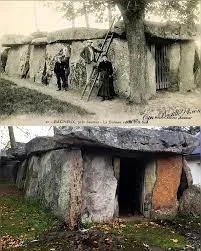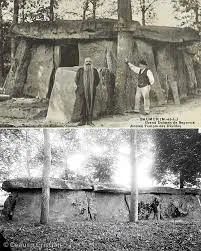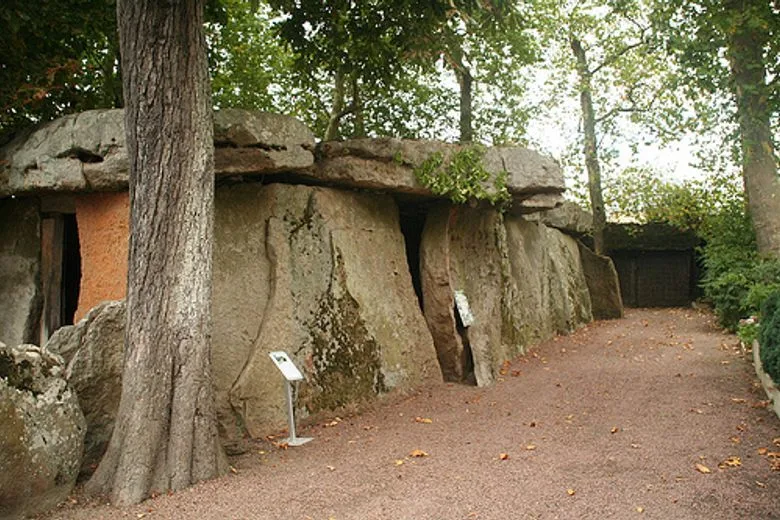The Dolmen de Bagneux: Echoes of Neolithic Ambition
Nestled in Bagneux, near Saumur in France’s Loire Valley, the Dolmen de Bagneux stands as a colossal relic of the Neolithic period (circa 4000–3000 BCE). Spanning 18.5 meters (61 feet) in length and rising over 4 meters (13 feet) high, it ranks among Europe’s largest dolmens. This megalithic tomb, built with massive limestone slabs—some weighing up to 20 tons—reflects the remarkable engineering and social cohesion of its prehistoric builders.

A Monument of Stone and Status
The dolmen’s long rectangular chamber, formed by upright orthostats and capped by enormous slabs, was designed as a burial site, likely for elite individuals or communal interments. The sheer scale of the structure suggests it held profound significance, possibly reserved for leaders or revered ancestors. Constructing such a monument demanded collective effort, from quarrying and transporting the stones to precisely positioning them, hinting at a society with organized labor and hierarchical structures.

Beyond Burial: A Cultural Landmark
Like other Neolithic dolmens, the Dolmen de Bagneux likely served purposes beyond burial. Its imposing presence may have marked territorial boundaries, anchoring a community’s claim to the land. Alternatively, it could have been a ritual site, where ceremonies tied to death, fertility, or celestial events unfolded. The erosion of its original earthen mound has left the stone framework exposed, revealing a stark, skeletal beauty that still commands awe.

Connections to a Wider World
The Dolmen de Bagneux shares kinship with other megalithic structures, such as Britain’s Stonehenge or Ireland’s Newgrange, which also reflect Neolithic preoccupations with death and the cosmos. Unlike these sites, Bagneux’s dolmen is notable for its sheer size and simplicity, lacking the intricate carvings seen in some counterparts but compensating with raw scale. Its construction aligns with a broader European tradition of megalithic architecture, suggesting cultural exchanges across regions during the Neolithic.

Enduring Questions and Legacy
The dolmen raises enduring questions: Who were the individuals buried here? What rituals animated this space? How did a seemingly simple society muster the resources for such a feat? Today, protected as a historic site, the Dolmen de Bagneux draws visitors and scholars, its weathered stones whispering of a time when communities shaped the landscape to honor their dead and assert their presence. It stands as a testament to Neolithic ambition, bridging modern observers with the ingenuity of our ancient ancestors.


